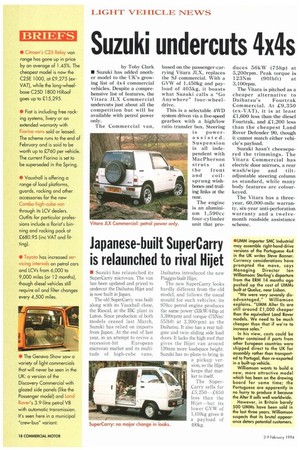Japanese-built SuperCarry is relaunched to rival Hijet
Page 20

If you've noticed an error in this article please click here to report it so we can fix it.
• Suzuki has relaunched its SuperCarry microvan. The van has been updated and priced to undercut the Daihatsu Hijet and is now built in Japan.
The old SuperCarry was built along with its Vauxhall clone, the Rascal, at the IBC plant in Luton. Since production of both models ceased last March, Suzuki has relied on imports from Japan. At the end of last year, in an attempt to revive a recession-hit European microvan market and its multitude of high-cube vans, Daihatsu introduced the new Piaggio-built Hijet.
The new SuperCarry looks hardly different from the old model, and follows the usual mould for such vehicles: its 970cc petrol engine produces the same power (33kW/44hp at 5,300rpm) and torque (75Nm/ 55lbft at 3,200rpm) as the Daihatsu. It also has a rear tailgate and twin sliding side load doors. It lacks the high roof that gives the Hijet van around 120mm more loadspace height. Suzuki has no plans to bring in a pickup version, so the Hijet keeps that market to itself.
The SuperCarry sells for £5,250—£650 less than the Hijet—but its lower GVW of 1,410kg gives it a payload of 490kg.




















































































